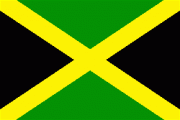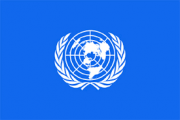Mr. Chairman,
Our delegation extends heartiest congratulations to you on your election to the Chair of the 45th Session of the Commission. We also extend sincere congratulations to the other members of the Bureau on their election. Please convey our appreciation to the Secretariat for the excellent documentation provided for the Session. We are assured that under your able and steadfast chairmanship we will achieve all the objectives that we have set out for this Session.
Mr. Chairman,
On a demographic level, Jamaica’s population is far advanced in its transition to low birth and death rates. The total fertility rate is around 2.4 children per woman and the crude death rate is approximately 6 deaths per 1000 population. High levels of external migration have resulted in a relatively low annual population growth rate of under 0.5 per cent over the past ten (10) years. The combined effects of the declining fertility and mortality rates have resulted in a rapidly ageing population. The child population under 15 years is declining but the adolescents and youth segment, 10-24 years, is now at its maximum of about 780,000 in a population of only 2.7 million. This peaking of the adolescents and youth population in Jamaica is similar to the population globally in this age group. The working age population 15-64 years and the elderly are expanding rapidly.
Mr. Chairman,
Since Cairo, Jamaica has developed and implemented a range of laws, policies and plans for improving the situation of adolescents and youth. These have included the following:-
- a National Youth Policy,
- a National Policy on Children,
- a National Policy and Programme on Adolescents Sexual and Reproductive Health
- Policy Guidelines for health professionals in the provision of contraceptives to children under the age of consent,
- A Trafficking in Persons Act
- A Child Care and Protection Act
The Government has also drafted, and is in the process of finalising, a National Plan of Action on Children and Violence and tabled a Bill in Parliament for the re-admission to educational institutions for Adolescents who have been pregnant. We have also undertaken major institutional reforms, including the establishment of a National Centre for Youth Development, a Children’s Registry and an agency for Children’s Advocacy.
Mr. Chairman,
Jamaica is among the countries in the Caribbean and elsewhere which historically have had very high fertility rates among adolescents and youth. The fertility rate at present among adolescents is about 72 births per 1000 population 15-19 years and the fertility rate among the youth segment 20-24 years is the highest for all other age groups. The average age for first sexual intercourse among boys is around 14 years and for girls about 15.5 years.
Despite these salient demographic and cultural facts, and despite the fact that since the 1960s Jamaica has established a very strong and successful family planning programme, adolescents and youth had been effectively marginalized from such programmes up until the ICPD Programme of Action and the Key Actions for the Further Implementation of the Programme of Action. Adolescents and youth friendly sexual and reproductive health programmes are now being implemented in selected health clinics island-wide and integrated into existing family planning and maternal and child health programmes. It should be noted that Japan, through the UNFPA, supported a national programme for the provision of sexual and reproductive health information and care for persons with disabilities. In the early 2000s, this was regarded as a first of its kind in the region and probably in the developing world.
In spite of the gains so far, however, sexual and reproductive health programmes targeting adolescents and youth are underfunded and not fully integrated into the primary health care system. Major efforts are still necessary if we are to achieve the MDG goal of universal access to reproductive health services for adolescents and youth by 2015.
Mr. Chairman,
The HIV/AID prevalence rate among the 15-49 years age group is about 1.7 per cent. The rate, however, varies across different target groups reflecting a high of over 30 per cent for men who have sex with men and about 5 per cent for commercial sex workers. An area of major concern relates to the fact that the rate of infection for adolescent females is about three times that for adolescent males. This follows from the fact that adolescent females are abused by older men, are less able to negotiate condom use and are vulnerable to poverty. The rate of transmission from mother to child has declined and the overall death rate from HIV/AIDS has also declined. These more favourable conditions are influenced by the availability and access to free antiretroviral medicines. In light of the situation of adolescents and youth, there is an urgent need to develop policies and programmes targeting, particularly, adolescent females for HIV/AIDS prevention and treatment.
Mr. Chairman,
The vast majority of funding for HIV/AIDS in Jamaica is sourced externally, from the Global Fund, the World Bank, the IDB, The Clinton Foundation and other international development partners. Within the next two years, most of these funds will be reduced substantially or totally dried up. In anticipation of this situation, Jamaica has only recently completed a study on the financial sustainability of the National HIV/AIDS Programme. The study should provide a sound basis for advancing the Government’s policies in this area. If my information is correct, it is the first such study to be undertaken in a developing country with support from the World Bank.
Mr. Chairman,
In Jamaica and the English-speaking Caribbean, women and girls do not follow the same pattern in educational performance as their counterparts in other developing regions. In Jamaica, women and girls outperform men and boys at all levels of the education system. For example, at the university level, women comprise about 70 to 80 percent of all graduates. Women have been making significant in-roads in occupations that were once dominated by men. Women now dominate the professional, technical and administrative positions in the public sector. In spite of these gains however, the unemployment rate among female adolescents and youth is twice that of their male counterparts. From a development perspective, this is not in and of itself a bad situation for females, given that a relatively high proportion of female adolescents and youth are out of the labour market because they are attending school. However, there are clear concerns about the relatively low enrollment of male adolescents and youth in the education system at the primary and secondary levels.
Mr. Chairman,
In the areas of crime and violence, motor vehicle accidents and mortality, adolescents and youth males are disproportionately represented compared to females in the same age categories. In general, male adolescents and youth are in crisis and need urgent interventions for improving their condition. The Government, in collaboration with international development partners, NGOs and the private sector, has been initiating multi-agency programmes aimed at community renewal. These programmes are geared towards reducing the incidence of crime and violence among male adolescents and youth, providing sexual and reproductive health services and promoting entrepreneurship among vulnerable adolescents and youth.
In closing, Jamaica is committed to continue to reaffirm and implement the principles, objectives and actions as contained in the ICPD Programme of Action, including those related to the sexual and reproductive health and reproductive rights of adolescents and youth, up to 2014 and beyond.
Thank you.


